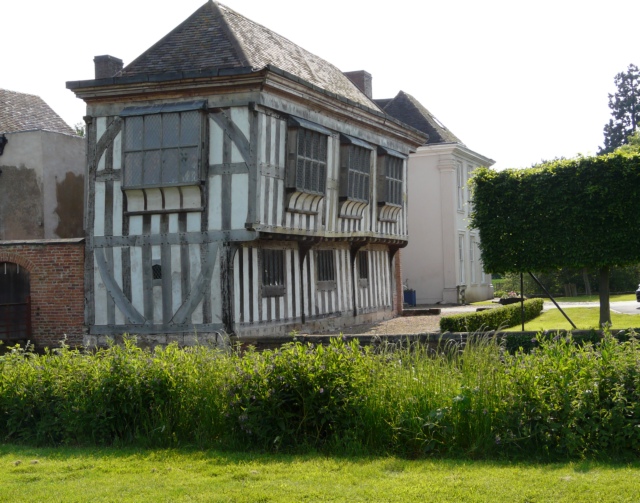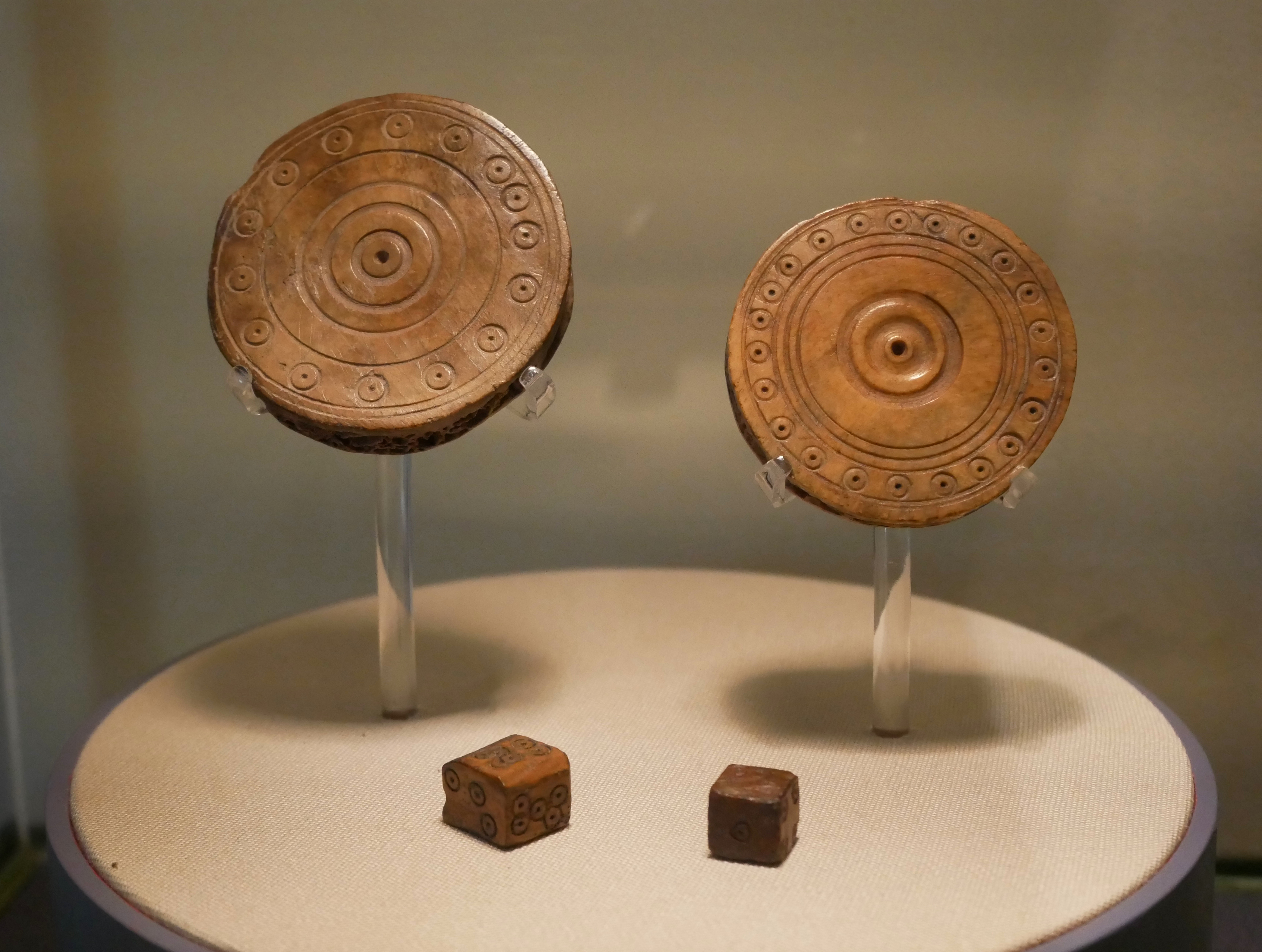|
Ticktack
Ticktack or Tick-Tack, is an historical English tables game for two players using a board similar to that used today for Backgammon and other tables games. Like its much more elaborate French counterpart, Trictrac, it has the unusual feature that there are several different ways in which it can be won, including ''Toots'' and ''Rovers''. History Ticktack is mentioned as early as 1586 as a game played by English country gentlemen in inclement weather along with three other games of the tables family: Lurch, Irish and Doublets. The earliest and only comprehensive set of rules appeared in 1672 by Willughby.Willughby (1666–1672), pp. 116 ff. However, Cotton gives an overview in ''The Compleat Gamester'' of 1674, an account which was reprinted until 1754, after which the game faded from view, being reported in Halliwell-Phillips (1881) as archaic.Halliwell-Philipps (1881), p. 873. Name Willughby says that the name Ticktack came from the rule that if a man is touched, it must b ... [...More Info...] [...Related Items...] OR: [Wikipedia] [Google] [Baidu] |
Trictrac
Trictrac is a French board game of skill and chance for two players that is played with dice on a game board similar, but not identical, to that of backgammon. It was "the classic tables game" of France in the way that backgammon is in the English-speaking world.Parlett (1999), p. 86. Trictrac's gaming interest lies in its multiple combinations, the importance of decision-making and its comprehensive rules which have been well documented and remained stable since the early 17th century. It requires constant attention from the players whether or not it is their turn. Its vocabulary, which is very rich, frequently occurs in French literature. The object of the game is not to get out the men as quickly as possible as in jacquet or backgammon, but to score as many points as possible. The game usually ends before all the men have been borne off. The name is sometimes spelt tric trac or tric-trac. History Trictrac was very popular in France at the royal court and in aristocratic ... [...More Info...] [...Related Items...] OR: [Wikipedia] [Google] [Baidu] |
Lurch (game)
Lourche or Lurch (French: ''jeu du Lourche'', German: ''Lurz'', ''Lurtsch'' or ''Lurtschspiel'') was a French board game that was played in the 16th or 17th century. It was played, like backgammon, on a tables board. The rules of the game have been lost, Furetière (1727) describing it simply as a "kind of trictrac game", trictrac being the name given to the board used for tables games. The game is referred to in the English expression 'left in the lurch', parallel to the French ''demeurer lourche'', referring to the hopeless losing position a player of the game could end up in. History The game was listed by Rabelais in his work, ''Gargantua and Pantagruel'', in 1534. In 1586, the ''English Courtier and Country Gentleman'' says that "In fowle weather, we send for some honest neighbours, if happely wee bee without wives, alone at home (as seldome we are) and with them we play at Dice and Cards, sorting our selves according to the number of Players, and their skill, some in Tickta ... [...More Info...] [...Related Items...] OR: [Wikipedia] [Google] [Baidu] |
Francis Willughby's Book Of Games
''Francis Willughby's Book of Games'' is a book published in 2003 that printed for the first time a transcription of a seventeenth-century manuscript written by Francis Willughby that was held in the library of the University of Nottingham. The modern edition was edited by Jeffrey L Forgeng, Dorothy Johnston, and David Cram, and was published by Ashgate Publishing Company with . The manuscript was left incomplete when Willughby died at the age of 36, but even in its unfinished state it provides an unrivalled insight into the sports and games of his period. Among the features of the book include descriptions of card games that are otherwise only known from reference in literature. It also includes the first formal study of children's board games to be written in a European language; investigation of the original manuscript has revealed that some of the descriptions of children's games were actually written by an unknown child, with later corrections being made by Willughby. Card ... [...More Info...] [...Related Items...] OR: [Wikipedia] [Google] [Baidu] |
Irish (game)
Irish or the Irish Game was an Anglo-Scottish tables game for two players that was popular from the 16th to the mid-18th centuries before being superseded by its derivative, the "faster paced" backgammon. In its day, Irish was "esteemed among the best games at Tables." Its name notwithstanding, Irish was one of the most international forms of tables games, the equivalent of French ''toutes tables'', Italian ''tavole reale'' and Spanish ''todas tablas'',Forgeng, Johnson and Cram (2003), p. 269. the latter name first being used in the 1283 ''El Libro de los Juegos'', a translation of Arabic manuscripts by the Toledo School of Translators. The name may have been coined to distinguish it from the English Game which was older. There is no evidence that it was particularly linked with Ireland, although it was played there too. History ''Irish gamyne'' is mentioned as early as 1507 being played by the Scottish king, James IV, and was a game at which he was apparently a "great hand". In ... [...More Info...] [...Related Items...] OR: [Wikipedia] [Google] [Baidu] |
Tables Game
Tables games are a class of board game that includes backgammon and which are played on a tables board, typically with two rows of 12 vertical markings called points. Players roll dice to determine the movement of pieces. Tables games are among the oldest known board games, and many different varieties are played throughout the world. They are called 'tables' games because the boards consist of four quadrants or 'tables'. The vast majority are race games, the tables board representing a linear race track with start and finish points, the aim being to be first to the finish line, but the characteristic features that distinguish tables games from other race games are that they are two-player games using a large number of pieces, usually fifteen per player. Tables games should not be confused with table games which are casino gambling games like roulette or blackjack. Name The word 'tables' is derived from the Latin ''tabula'' which primarily meant 'board' or 'plank', but als ... [...More Info...] [...Related Items...] OR: [Wikipedia] [Google] [Baidu] |
Tables Board
Tables games are a class of board game that includes backgammon and which are played on a tables board, typically with two rows of 12 vertical markings called points. Players roll dice to determine the movement of pieces. Tables games are among the oldest known board games, and many different varieties are played throughout the world. They are called 'tables' games because the boards consist of four quadrants or 'tables'. The vast majority are race games, the tables board representing a linear race track with start and finish points, the aim being to be first to the finish line, but the characteristic features that distinguish tables games from other race games are that they are two-player games using a large number of pieces, usually fifteen per player. Tables games should not be confused with table games which are casino gambling games like roulette or blackjack. Name The word 'tables' is derived from the Latin ''tabula'' which primarily meant 'board' or 'plank', but also ... [...More Info...] [...Related Items...] OR: [Wikipedia] [Google] [Baidu] |
Men (tables Game)
The following is a glossary of terms used in tables games, essentially games played on a Backgammon-type board. Terms in this glossary should not be game-specific (e.g. specific to a single game like Backgammon or Acey-deucey), but applicable to a range of tables games. A ; ace # A die roll of one. # The face of a die with one pip. (Historically, 2=''deuce'', 3=''trey'', 4=''quater'', 5=''cinc'', 6=''sice''; though these terms are now obsolete.Murray (1941), p. 59.Parlett (2018), p. 28.) ; ace point : The player's first point on the board. Also home point or one point. B ; bar : The central strip separating the left and right halves of the board, usually formed by the raised edges or rails of each half board. The raised partition of the board.Longacre (1980), pp. 129 ff. ; bear off : To remove one's men from the board in the final stages of a game. The first to do so usually wins the game; however, in Trictrac, it scores points but the game continues. Also thr ... [...More Info...] [...Related Items...] OR: [Wikipedia] [Google] [Baidu] |
Historical Tables Games
History (derived ) is the systematic study and the documentation of the human activity. The time period of event before the invention of writing systems is considered prehistory. "History" is an umbrella term comprising past events as well as the memory, discovery, collection, organization, presentation, and interpretation of these events. Historians seek knowledge of the past using historical sources such as written documents, oral accounts, art and material artifacts, and ecological markers. History is not complete and still has debatable mysteries. History is also an academic discipline which uses narrative to describe, examine, question, and analyze past events, and investigate their patterns of cause and effect. Historians often debate which narrative best explains an event, as well as the significance of different causes and effects. Historians also debate the nature of history as an end in itself, as well as its usefulness to give perspective on the problems of the p ... [...More Info...] [...Related Items...] OR: [Wikipedia] [Google] [Baidu] |
Willughby, Francis
Francis Willughby (sometimes spelt Willoughby, la, Franciscus Willughbeius) FRS (22 November 1635 – 3 July 1672) was an English ornithologist and ichthyologist, and an early student of linguistics and games. He was born and raised at Middleton Hall, Warwickshire, the only son of an affluent country family. He was a student at Trinity College, Cambridge, where he was tutored by the mathematician and naturalist John Ray, who became a lifetime friend and colleague, and lived with Willughby after 1662 when Ray lost his livelihood through his refusal to sign the Act of Uniformity. Willughby was elected as a Fellow of the Royal Society in 1661, then aged 27. Willughby, Ray, and others such as John Wilkins were advocates of a new way of studying science, relying on observation and classification, rather than the received authority of Aristotle and the Bible. To this end, Willughby, Ray and their friends undertook a number of journeys to gather information and specimens, ... [...More Info...] [...Related Items...] OR: [Wikipedia] [Google] [Baidu] |
Bear Off
The following is a glossary of terms used in tables games, essentially games played on a Backgammon-type board. Terms in this glossary should not be game-specific (e.g. specific to a single game like Backgammon or Acey-deucey), but applicable to a range of tables games. A ; ace # A die roll of one. # The face of a die with one pip. (Historically, 2=''deuce'', 3=''trey'', 4=''quater'', 5=''cinc'', 6=''sice''; though these terms are now obsolete.Murray (1941), p. 59.Parlett (2018), p. 28.) ; ace point : The player's first point on the board. Also home point or one point. B ; bar : The central strip separating the left and right halves of the board, usually formed by the raised edges or rails of each half board. The raised partition of the board.Longacre (1980), pp. 129 ff. ; bear off : To remove one's men from the board in the final stages of a game. The first to do so usually wins the game; however, in Trictrac, it scores points but the game continues. Also thr ... [...More Info...] [...Related Items...] OR: [Wikipedia] [Google] [Baidu] |
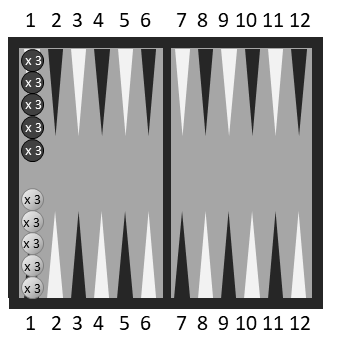
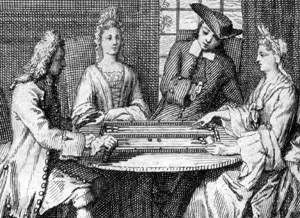


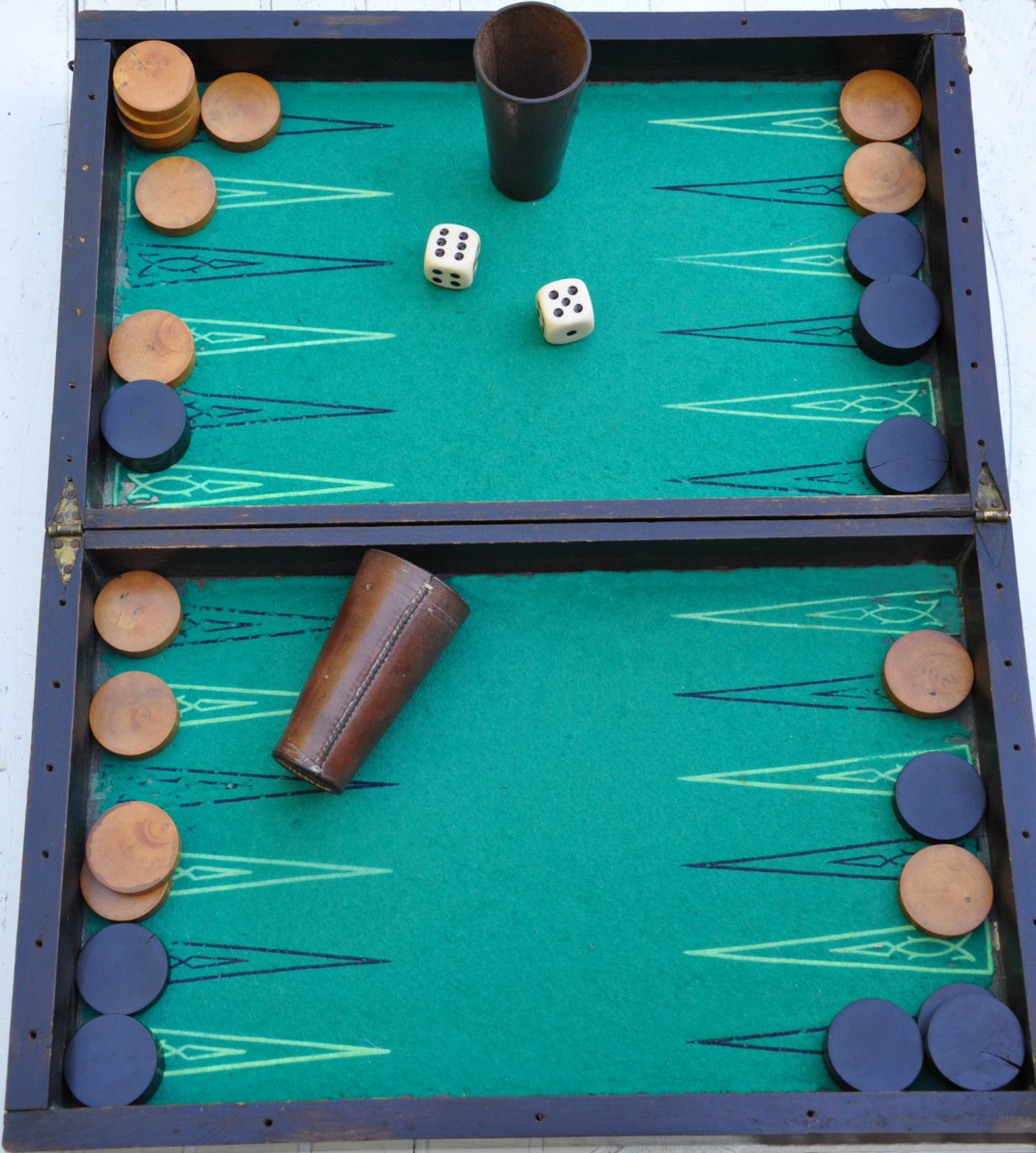
.jpg)
